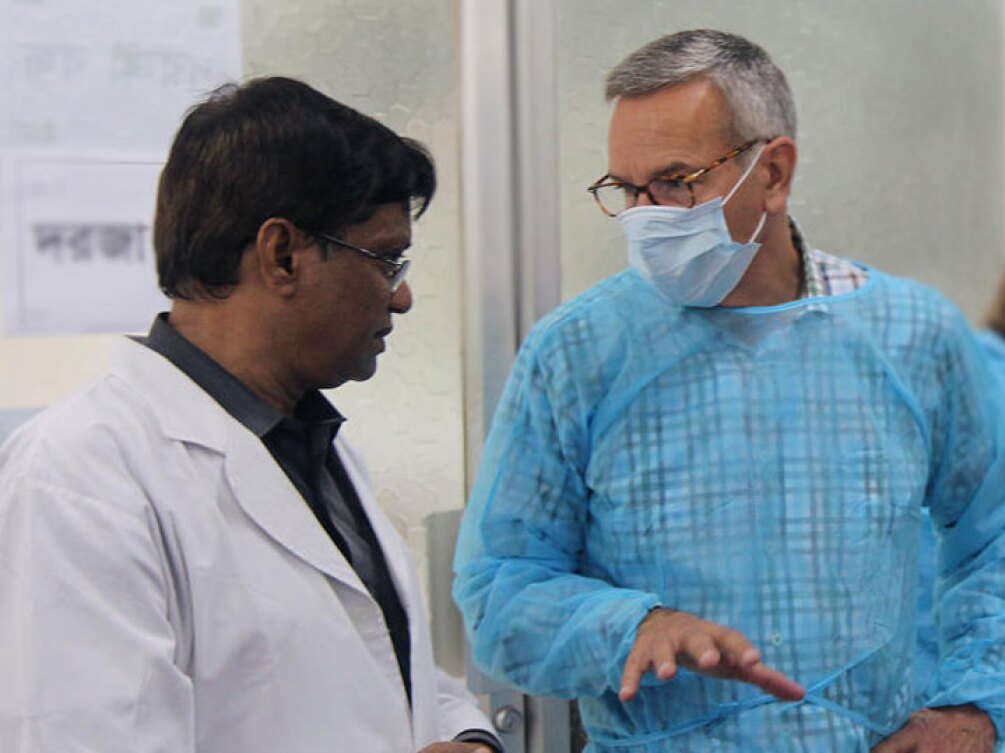Today, new and unique health challenges are constantly arising, from caring for vulnerable populations in the face of emerging health threats like Ebola or Zika to figuring out how we can leverage technology to improve healthcare delivery.
I often find myself wondering, How on earth can we solve the magnitude of the issues in front of us?
While I don’t have the answer, I do know that it takes more than one person to solve challenges like these. It takes the collective effort of motivated individuals and organizations that strive to create a positive impact. For us at Johnson & Johnson, that translates to a commitment to advancing human health in everything we do and on behalf of every individual we reach, including caring for our most vulnerable children.
Twenty years ago, Johnson & Johnson began its partnership with Save the Children, an organization that has worked for 100 years to give children in the U.S. and around the world a healthy start in life, the opportunity to learn and protection from harm.
Together, we have been able to develop programs focused on improving health, such as teaching skilled birth attendants to provide neonatal resuscitation to infants with blocked airways. To date, as part of this program effort, more than one million newborns have received lifesaving services—including 40,000 asphyxiated babies who have been successfully resuscitated.
Building on our legacy of being there for those impacted by disasters as far back as the 1906 San Francisco earthquake, when we officially began our disaster relief program, we’ve also partnered with Save the Children to provide support to children during times of crisis. This includes response to the 2010 Haiti earthquake and Hurricane Sandy in 2012, among other natural disasters, as well as creating resiliency training programs for innocent children experiencing the perils of a refugee crisis.
While change doesn’t occur overnight, it happens like this: person by person helping give others hope, knowledge, support and determination. Because when each of us joins in to rally as a group around a common cause, we can truly make a difference.
Coming face to face with critical health challenges—and determination
I recently traveled to Dhaka, the capital city of Bangladesh, with our Save the Children partners, where I saw firsthand the extraordinary impact their programs can have on a community.
As a result of rapid urbanization and growth, more than half of the approximately 40 million people living in urban areas in Bangladesh reside in slums. In Dhaka, nearly 1 in 5 people live in urban poverty. This creates a number of challenges, from low literacy rates to poor health and hygiene and, notably, a higher rate of newborn mortality.
While the country has made progress in decreasing rates of newborn mortality, more than half of deaths in children under the age of 5 are newborns.
To help face down this crisis, Johnson & Johnson has worked with Save the Children to support improved delivery of lifesaving services for preterm, small and sick newborns in three hospitals across Dhaka, along with working with local communities to improve newborn care in slums.
When I first arrived in Dhaka, I was struck by the challenges—it was overwhelming to me at first. And I found myself wondering yet again, How can we solve these issues?
But as I met the incredible leaders and staff at Save the Children and felt their steely determination and the warmth of their hearts, I was reminded of the power of hope and community to create positive change, whether that’s in the form of group counseling sessions for pregnant mothers or making visits to the local hospital’s neonatology unit. The Save the Children leaders all over the world are guardian angels.
I left Bangladesh feeling inspired and filled with hope for what’s to come from our continued partnership and am proud to share that—in addition to its current $10 million, three-year global partnership commitment—Johnson & Johnson just announced a pledge of $5 million to Save the Children’s Centennial Commitment, which is directed to humanitarian assistance, disaster relief and resilience. In particular, we will work together to provide comprehensive mental health and psychosocial support for children, their families and caregivers—a critical intervention that currently faces challenges in reaching children in need.
While change doesn’t occur overnight, it happens like this: person by person helping give others hope, knowledge, support and determination. Because when each of us joins in to rally as a group around a common cause, we can truly make a difference as we work toward a healthy future for all.





